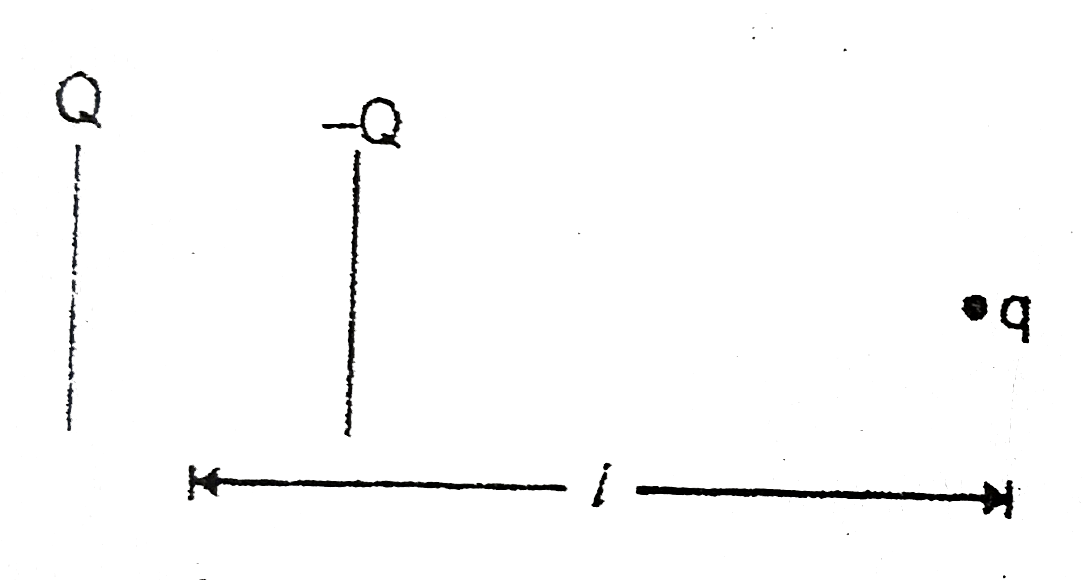The insulated plates of a parallel plate capacitor has a charge density σ. Show that that the work done in changing the distance from d1 to d2 is
The correct Answer is:U=σ2A2ε0κ(d2−d1)
Step by step video, text & image solution for The insulated plates of a parallel plate capacitor has a charge density sigma. Show that that the work done in changing the distance from d_(1) to d_(2) is by Physics experts to help you in doubts & scoring excellent marks in Class 12 exams.
Topper's Solved these Questions
- BOOK - SL ARORACHAPTER - CAPACITORSEXERCISE - Problem From Competitive Examinations17videos
CAPACITORS
- BOOK - SL ARORACHAPTER - ATOMS, NUCLEI AND MOLECULESEXERCISE - Problems For Self Practice87videos
ATOMS, NUCLEI AND MOLECULES
- BOOK - SL ARORACHAPTER - CHEMICAL EFFECT OF CURRENTEXERCISE - TYPE-B5videos
CHEMICAL EFFECT OF CURRENT
Similar Questions
Each plate of a parallel plate capacitor has a charge q on it. The capacitor is now connected to a battery. Now,
View SolutionThe charges on the plates of a parallel plate capacitor are equal and opposite in nature and to prevent them from sticking together, a positive work is done by an external agent to maintain the plate separation. What happens to this external work done in this case?
View Solution
Knowledge Check
- Question 1 - Select One
As the distance between the plates of a parallel plate capacitor decreased
Achances of electrical break down will increases if potential difference between the plates is kept constant.Bchance of electrical break down will decreases if potential difference between the plates is kept constant.Cchance of electric break down will increases if charge on the plates is kept constantDchance of electrical break down will decrease if charge on the plate is kept constant. - Question 2 - Select One
A parallel plate capacitor is charged. If the plates are pulled apart
Athe potential difference increasesBthe capacitance increasesCthe total charge increasesDthe charge and the potential difference remain the same - Question 3 - Select One or More
The plates of a parallel plate capacitor are, not exactly parallel. The surface charge density therefore :
Ahigher at the closer endBthe surface charge density will not be uniformCeach plate will have the same potential at each point.Dthe electric field is smallest where the plates are closest.
The plates of a parallel plate capacitor have surface area A and are initially separated by a distance d.They are connected to a battery of voltage v0 . Now,the plates of the capacitor are pulled apart to a separation 2d.Then increase in the energy of the battery is ..
View SolutionThe plates of a parallel plate capacitor are, not exactly parallel. The surface charge density therefore :
View SolutionThe plates of small size of a parallel plate capacitor are charged as shown. The force on the charged particle of 'q' at a distance 'l' from the capacitor is : (Assume that the distance between the plates is d<<l)
 View Solution
View SolutionThe plates of a parallel plate capacitor are charged with a battery so that the plates of the capacitor have acquired the P.D. equal to e.m.f of the battery. The ratio of the work done by the battery and the energy stored in capacitor is
View SolutionIn the figure shown the plates of a parallel plate capacitor have unequal charges. Its capacitance is 'C' P is a point outside the capacitor and close to the plate of charge −Q. The distance between the plates is 'd'
 View Solution
View Solution

